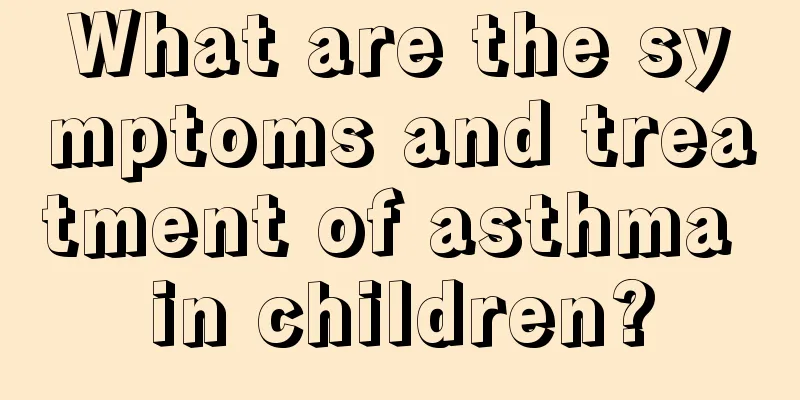How to treat baby tinea versicolor

|
Tinea versicolor, commonly known as tinea versicolor, is a common symptom that appears on the body, and infants are one of the main groups affected. When children develop tinea versicolor, many parents do not care and think it will not affect their children's health. Doctors say that tinea versicolor in babies is a disease that requires treatment. Therefore, parents should know how to treat tinea versicolor in babies. Tinea versicolor is a superficial fungal disease caused by Malassezia infection of the stratum corneum of the epidermis. The disease is chronic, with mild inflammation and usually no symptoms. The lesions are characterized by scattered or fused hypopigmented or hyperpigmented macules with bran-like desquamation, which often occur on the chest, back, upper arms, axillae, and sometimes on the face. What is the treatment for infantile tinea versicolor? First of all, when treating infantile tinea versicolor, some hormone drugs cannot be used, as this will cause the child's capillaries to continue to expand, leading to skin atrophy and thinning, and causing dependence on drugs. This will affect the healthy growth of the baby. Furthermore, because children's metabolism is relatively active and they are prone to sweating, exposing their skin lesions can inhibit some bacteria to a certain extent. Treatment recommendations: Treatment can be with Celexa lotion (2% ketoconazole). When showering, depending on the size of the skin lesions, use 5 to 10 ml of Celexa lotion, add appropriate amount of water to mix, and apply to the skin all over the body until foaming, and gently scrub. Rinse off with water after 10 minutes. Apply once a day. After 7 days, change to twice a week for a total of 4 weeks. Observe after 2 weeks of drug withdrawal. Pityriasis liniment No. I and No. II (25% sodium thiosulfate, 3% dilute hydrochloric acid solution) are applied to the lesions successively to produce new ecological sulfur to achieve the purpose of sterilization. Apply 1 to 2 times a day for at least 1 to 2 weeks. Guidance: Babies’ skin is relatively delicate, so it is recommended that they go to the hospital for treatment under the guidance of a doctor. Be careful to prevent the baby from sweating excessively; take a shower and change clothes frequently; sunbathing also has a certain effect; daily necessities such as sheets, towels and clothes should be rinsed and disinfected frequently. diagnosis According to its clinical manifestations, there are hypopigmentation or hyperpigmentation in half of the chest, back, armpits, upper arms, etc., which are scattered or fused, with bran-like desquamation on it. The dandruff is directly smeared with 10% potassium hydroxide solution to find curved or arc-shaped hyphae or round spores. The diagnosis of this disease is not difficult. Sometimes the lesions fluoresce yellow under filtered ultraviolet light, which is more helpful for diagnosis. Why are babies more likely to develop tinea versicolor? Doctors say that this is mainly caused by excessive sweating in babies, so parents are advised to change clothes and wipe the bodies of children who sweat a lot frequently. In addition, tinea versicolor is also a common skin disease in children. As children have weak resistance, treatment and daily care should be carried out as soon as the disease is discovered. |
<<: Why does my baby always stick out his tongue?
>>: Dietary treatment for bronchitis in children
Recommend
How to prevent babies from getting prickly heat in summer?
Infants and young babies will get prickly heat if...
Why do young children have trouble sleeping?
The sleep problem of young children has always be...
Why does a newborn baby not urinate for 4 days?
Normal newborns will urinate immediately after de...
What should I do if my child often has sore throat?
For all parents in the world, it is necessary to ...
What should I pay attention to when my one-year-old baby has a rash?
I believe many mothers have had this experience. ...
What is the cause of the baby's diarrhea with blood?
We all know that by observing the baby's stoo...
How to make purple sweet potato nutritious for babies
Purple sweet potato, also known as black sweet po...
Sequelae of general anesthesia for children
Because children are young and have low immunity,...
Can children drink pigeon soup?
Children's bodies are in the development stag...
Will baby malnutrition cause anorexia?
Babies under three years old have not fully devel...
What should I do if my child doesn’t want to sleep?
Parents often encounter a headache problem, that ...
What are the causes of pleural effusion in children?
Pleural effusion is a disease that usually occurs...
Can children's X-shaped legs heal on their own?
Everyone wants their legs to be long and straight...
How to supplement calcium for three-month-old babies?
Some babies have calcium deficiency problems, so ...
Is it okay for children to take medicine for dry cough?
In autumn and winter, the climate is relatively d...









